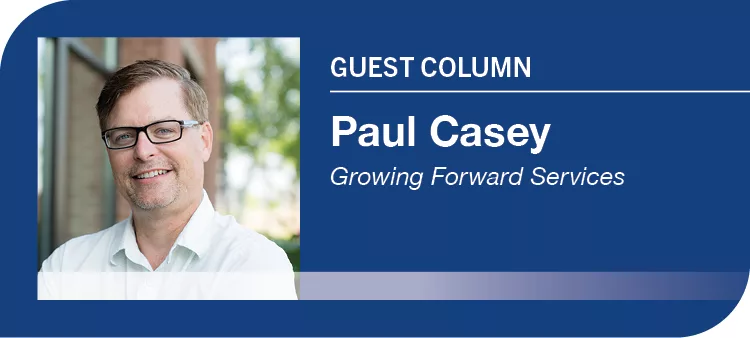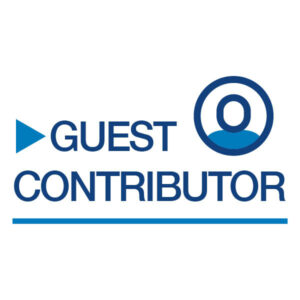
Home » Effective leaders tend to be the best listeners
Effective leaders tend to be the best listeners

May 11, 2023
One way to be a great servant-leader is to be a great listener.
Reflect on this idea by finishing these sentences:
- “I can listen effectively when ...”
- “I do not listen effectively when ...”
Most of us need reminding more than instructing on how to be a great listener. You will garner a great deal of respect from your team if you slow down and take the time to hear them out.
Pay attention
Pay attention to your own frame of mind and the signals you are emitting: your body language, eye contact, breathing, facial expression and tone of voice. Empty the mind-chatter of what you want to say next. Avoid the distractions of your phone or computer screen that might pull your attention away. Put your papers aside or even move to part of the room free of “squirrels” that compete for your attention.
Then, pay attention to the other person, focus on the present moment and operate from a place of respect and dignity. Lean forward with a “What can I learn?” curiosity. Your focus leads to connection.
“Most communication resembles a pingpong game in which people are merely preparing to slam the next point across, but pausing to understand differing points of view and associated feelings can turn apparent opponents into true members of the same team,” said Cliff Durfee, author of “If Clutter Could Talk.”
Often, whipping out a pen and paper to take notes shows others you are taking what they say seriously, seeking to capture their concerns or requests.
(With)holding judgment
Begin listening with an open mind for new ideas, perspectives and possibilities coming your way. Be willing to be influenced – not locked into a preconceived position.
Don’t get hung up on the person’s emotional words or on their poor delivery of their issue.
Remember the difference between acceptance vs. approval. You want to accept the person for who they are and their valuable input, without necessarily agreeing with everything they say. Your nodding is simply to communicate, “Go on,” not always, “You’re right.”
Hold back criticism or selling your point right away until comprehension is complete. As is said on the battlefield, “Hold your fire.”
Give others time to get it all out, even if you tend to impatiently want to cry out, “Land the plane!” Use your emotional energy to understand and move toward the person, without trying to protect yourself or move away from them.
Reflecting
Chris Voss, author of “Never Split the Difference,” shared a great tip on how to get a non-talker to open up more: repeat the last three words or last phrase the person just said. They can’t help but expand on it.
Paraphrasing their key points puts what they said into your own words and shows that you heard them out and are seeking to understand them.
Mirror the other person’s emotions and information. If you are locked and loaded on them, you might notice and say, “I see a smile,” or, “You hesitated.”
When people sense that you are trying to understand their feelings, as well as their words, they tend to feel psychologically safe. Instead of practicing sympathy (taking on the emotion), you are practicing empathy (self-identifying with the emotion). “Empathy is listening with the eyes and the heart,” said Stephen Covey, author of “The 7 Habits of Highly Effective People.”
Clarifying
Ask questions that double-check anything ambiguous. To keep getting the expanding, bigger picture, keep being curious. A great phrase to use is, “Help me understand how you see the situation.”
Open-ended, clarifying and supportive questions draw people out and help them expand their ideas – and force them to reflect more deeply. It’s like an excavation project. Pull more out of them by saying, “Tell me more.”
“The most important thing in communication is to hear what isn’t being said,” said Peter Drucker, an author known as the father of modern management.
To clarify, try the fill-in-the-blanks method. Say a word or phrase and trail off until the other person finishes the sentence with more detail. “Because…” “And…” “Meaning…” “So what you’re saying is…”
Another method is the perception check. Offer a tentative interpretation of what they are trying to communicate: “I get the feeling you are___, is that right?” or “I’m picking up that you …”
Summarizing
Restating their key theme(s) and providing the big-picture of their message helps everyone be clear on any mutual responsibilities or follow-up that stem from the conversation.
You could ask the other person to summarize, too: “What did you hear us say?” This confirms understanding has taken place.
Sharing
Only once you have understanding should you seek to be understood. You would never want a doctor to give you medication before listening to your ailment. So, diagnose before prescribing. You are following the EAR process in the proper order: explore, acknowledge, respond.
Affirm them for opening up. They had other options.
Now there is more of an open door to introduce your own ideas, feelings, suggestions and concerns. A good transition from summarizing to humbly sharing is to use the words “feel,” “felt” and “found. “I can see how you feel. If it were me, I’d have felt… What I’ve found to be successful is…”
You are practicing the four L’s: listen to learn to link to lead. You start with listening, using these techniques, and by doing that well, you learn about the colleague or customer and what their needs are. Through closing the loop of communication, you are now linked to them with a stronger bond. And the result is true leadership or influence with that person.
Paul D. Casey lives in the Tri-Cities and is the owner of Growing Forward Services.
Opinion Leadership Development
KEYWORDS may 2023





